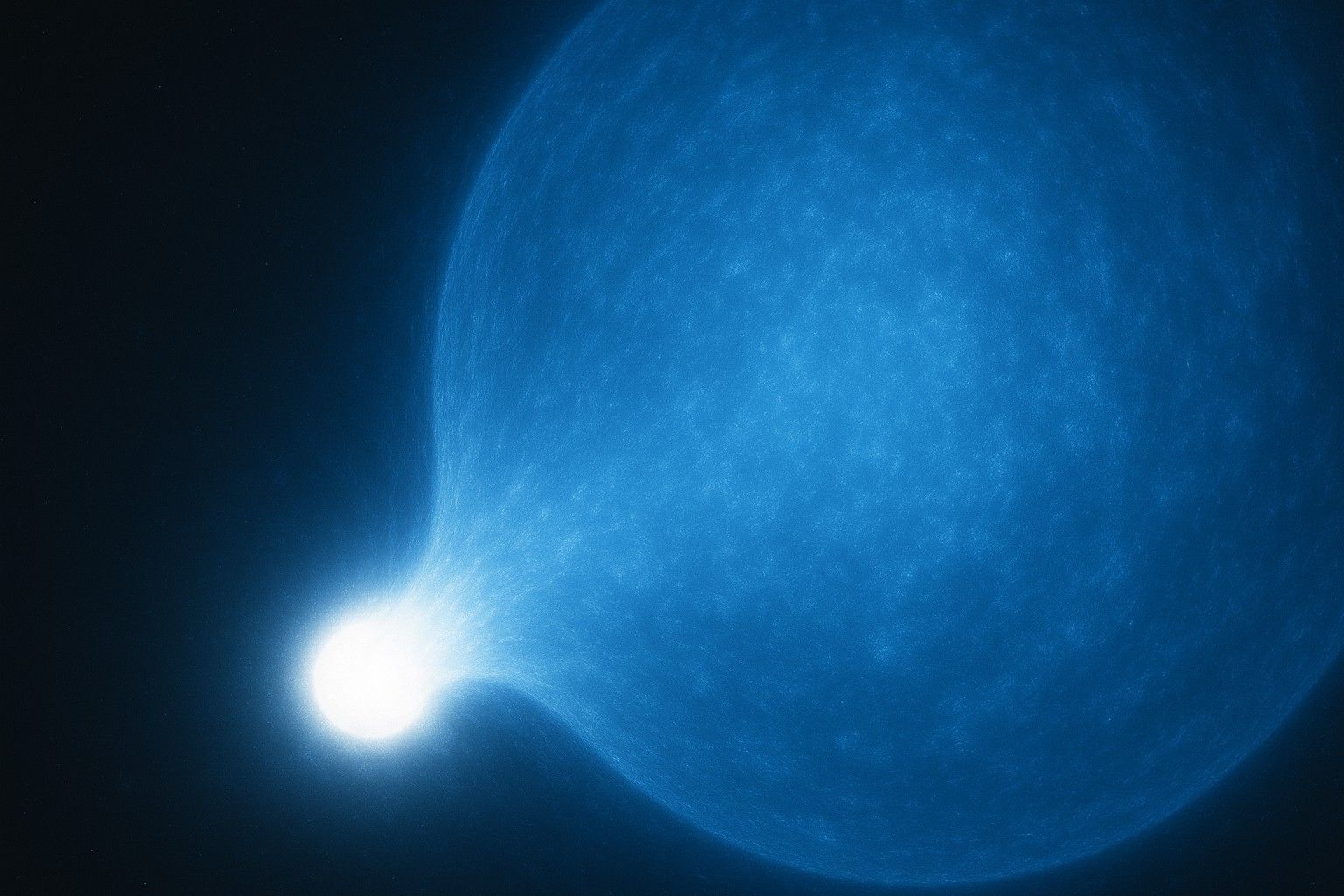Follow us on Google News (click on ☆)
The study focused on pulsar PSR J1928+1815, located approximately 455 light-years from Earth. Pulsars are rapidly rotating neutron stars, remnants of massive stars that exploded as supernovae. Their extreme density results from the compression of protons and electrons into neutrons.

Using China's FAST telescope, researchers discovered this pulsar has a companion - a helium star stripped of its outer hydrogen layers. These two celestial bodies, separated by only 700,000 miles (1.12 million km), complete a mutual orbit every 3.6 hours.
PSR J1928+1815 spins nearly 100 times per second, a speed achieved by absorbing matter from its companion. This process, known as accretion, can lead to a common envelope phase where the pulsar orbits within the outer layers of the other star.
Simulations suggest this binary system was initially more widely spaced. The pulsar, by siphoning off its companion's outer layers, likely created a common envelope before moving closer to the companion star's core. This interaction would have eventually ejected the envelope, leaving a tight binary system.
The pulsar now finds itself within the initial volume of its companion, after having orbited within its now-ejected outer layers.
Estimates suggest only 16 to 84 similar systems may exist in the Milky Way. This rarity underscores the discovery's importance for understanding binary star evolution.
Research details were published in Science, offering new insights into double star system dynamics.
How does a pulsar achieve such high rotational speed?
Pulsars like PSR J1928+1815 acquire their phenomenal spin rates through a process called accretion. By absorbing matter from a companion star, the pulsar gains angular momentum, accelerating its rotation.
This mechanism resembles a figure skater pulling arms closer to spin faster. The transferred matter acts as an external force, increasing the pulsar's rotational speed.
Millisecond pulsars, capable of spinning hundreds of times per second, represent the ultimate outcome of this process. They mark an advanced phase in binary system evolution where interaction between the two stars plays a key role.
What is a common envelope phase in a binary system?
The common envelope phase is a critical stage in some binary systems' evolution. It occurs when one star, often a red giant, engulfs its companion within its outer layers.
This configuration leads to special mass and energy transfer, potentially resulting in either stellar merger or envelope ejection. The outcome is a tighter binary system, like that observed with PSR J1928+1815.
Understanding this phase is essential for explaining the diversity of stellar systems observed in the Universe. It illustrates how gravitational interactions can profoundly alter stars' fates.